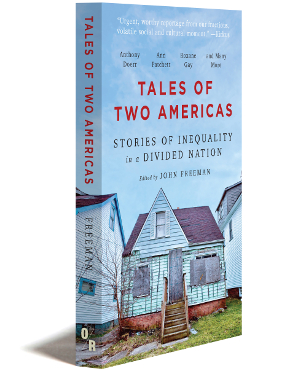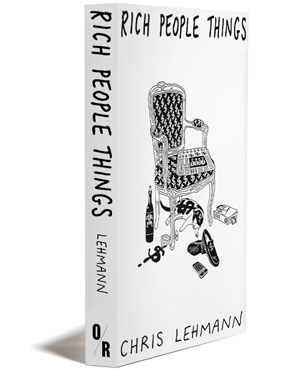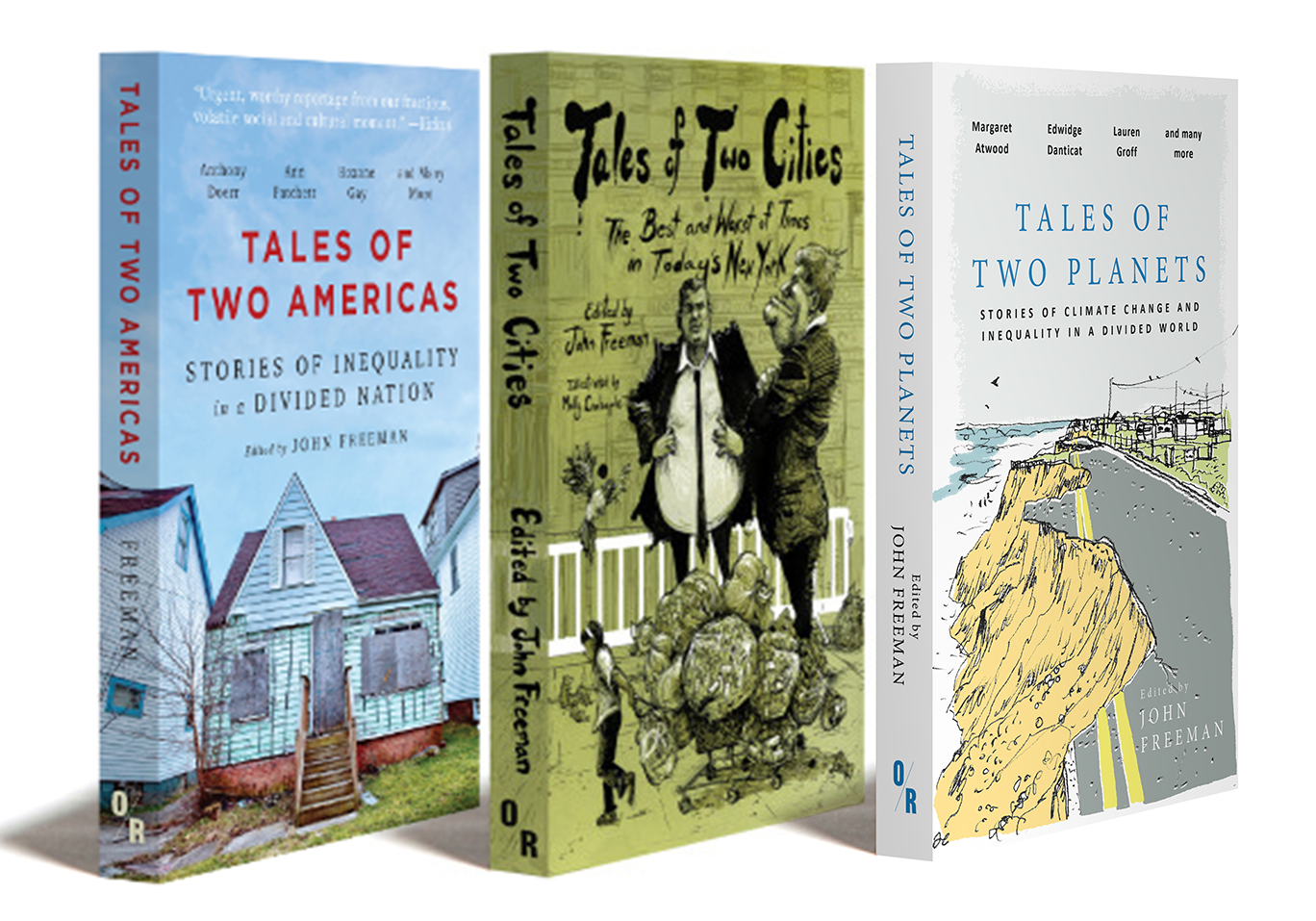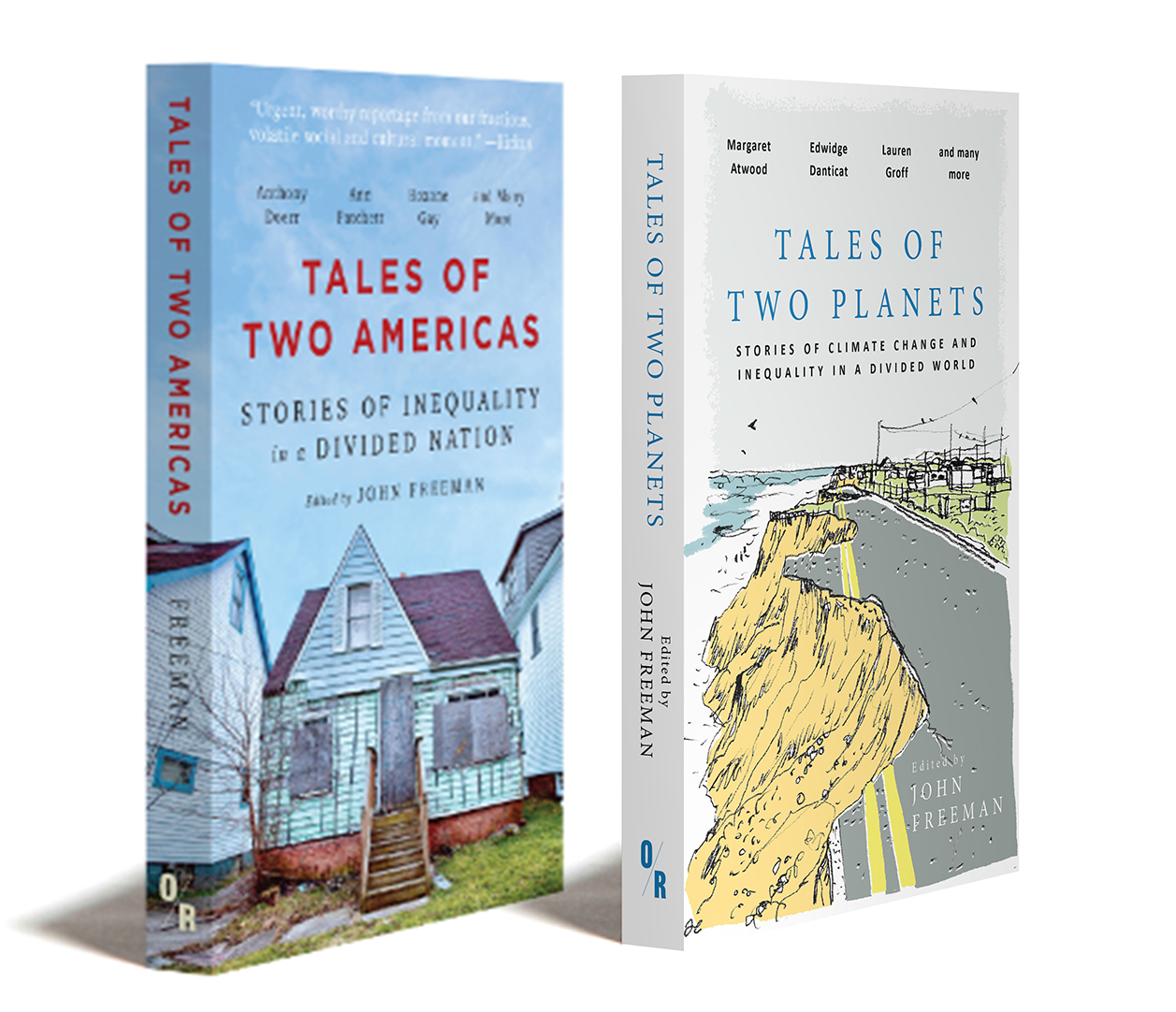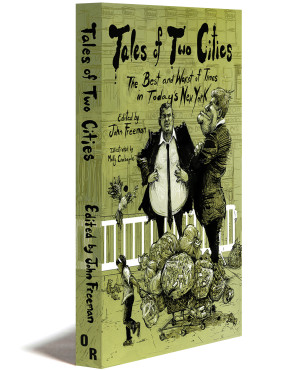
Tales of Two Cities
THE BEST AND WORST OF TIMES IN TODAY'S NEW YORK
Edited by JOHN FREEMAN
Illustrated by MOLLY CRABAPPLE
Published in association with HOUSING WORKS
With contributions from: DAVID BYRNE, GARNETTE CADOGAN, BILL CHENG, TEJU COLE, LYDIA DAVIS, JONATHAN DEE, JUNOT DÍAZ, MARK DOTY, DAVE EGGERS, JONATHAN SAFRAN FOER, TIM FREEMAN, D.W. GIBSON, CHAASADAHYAH JACKSON, SARAH JAFFE, LAWRENCE JOSEPH, VICTOR LaVALLE, VALERIA LUISELLI, COLUM McCANN, DINAW MENGESTU, TÉA OBREHT, PATRICK RYAN, MICHAEL SALU, ROSIE SCHAAP, TAIYE SELASI, AKHIL SHARMA, ZADIE SMITH, JEANNE THORNTON, HANNAH TINTI, MARIA VENEGAS, and EDMUND WHITE
"A bristling portrayal of New York in the tradition of Jacob Riis." —Guernica
"Above all else, the anthology, full of pieces varied in tone and deeply personal perspectives, helps convey the reality of today’s economic inequality in ways that an academic tome simply can’t. " —Sheila Bapat, Feministing
"Beautifully careworn." —Flavorwire
Tweet
About the Book
Growing inequality is today a world-wide phenomenon. But it is at its most acute in the “world cities” where the rich choose to live (or invest their fortunes in real estate). Nowhere is this more evident than New York City, where the top 1% earns upwards of $500,000/year, while 22,000 children are homeless.
What does this chasm of wealth feel like to people who live and work in NYC? The stories in Tales of Two Cities mix fiction and reportage to convey the indignities and heartbreak, the callousness and solidarities, of living side-by-side with people who have a stupefyingly different income.
In these pages we read of the polarizing effect of a violent attack on the Q train as it crosses the Manhattan Bridge, of the subterranean lives of homeless people who must find a bed in the city’s underground tunnels, and of the rage felt by a millionaire at being stuck in a snowstorm. We hear of the stresses that burgeoning gentrification can bring to neighbors in a Brooklyn apartment block, and of the way destitution in India shapes the perception of poverty in New York for an immigrant from the sub-continent. We walk past the luxury pet spas and yoga studios that have opened next to cheap hair braiding salons and detox clinics in Hamilton Heights, witness the shenanigans of seriously alienated night shift paralegals, and find out what it’s like to be a housing defendant standing up for tenants whose landlords go to shocking lengths to raise rents.
Eschewing more direct sociological or economic analysis, the pieces here focus on the human dimension of penury and profligacy coexisting in the tightest of quarters. In his successful election campaign, Mayor Bill de Blasio referred often to the “tale of two cities” that is life in today’s New York. With writing that will move the reader, not just emotionally but perhaps, too, to action, this anthology gives life to the meaning of those words in the streets and buildings of the metropolis.
A portion of the proceeds from this book will go to Housing Works.
Publication October 23, 2014 • 288 pages, with 5 illustrations by Molly Crabapple
Paperback ISBN 978-1-939293-63-3 • E-book ISBN 978-1-939293-64-0
About the Editor

|
John Freeman was until recently the editor of the literary magazine Granta. He is a former president of the National Book Critics Circle. His writing has appeared in a wide range of publications including the New York Times Book Review, the Los Angeles Times, The Guardian, and The Wall Street Journal. He is the author of The Tyranny of E-mail and How to Read a Novelist. |
Read an Excerpt
FROM FOUR MORE YEARS
BY JONATHAN DEE
“But you don’t own no shovel.”
“How do you know that?”
“Look at you,” the man said.
With that, the civility of negotiation was pretty well shot. The possibility, even, of a more physical resolution seemed to Chris to have been suddenly introduced. And, shovel or no shovel, he had reason to feel confident should things take that turn. But he knew he couldn’t let it play out that way. Not only couldn’t he instigate it, he couldn’t even defend himself, couldn’t pop this lowlife in the jaw no matter how legitimately threatened he might feel, on his own doorstep no less. Because he knew how that could all be made to look. Poor people lived for the opportunity to sue you. It was just one more way they tied your hands.
“So it’s robbery, then, is what this is,” he said. “Let’s just call it by its name. You’re a fucking thief. No different than the rest of them.”
“It’s called the marketplace, bitch,” the man said. “It’s called knowing what your customer will bear.”
“You know what’s the really galling part? The only reason we were out tonight at all was because we were doing something for charity. For you, basically. And it’s not even like I’m asking for charity in return. I’m willing to make a fair transaction. But to you it’s just an opportunity to steal whatever I haven’t already given away. She’s right. You do hate us.”
They stood in their deep footprints for what seemed like a long time. They could see each other’s breath. At the end of the block they heard another plow pass by.
Read the full story at Tin House.
In the Media
Electric Literature, March 20th, 2015
CounterPunch, January 23rd 2015
Flavorwire, December 9th 2014
Socialist Standard, December 3rd 2014
Vogue, November 3rd, 2014
The Guardian, October 24th 2014
Feministing, October 23rd 2014
Flavorwire, October 23rd 2014
Guernica, October 20th 2014
New York Times, October 17th 2014
VQR, September 30th 2014
“Every Night A Little Death,” Patrick Ryan in Medium, September 16th 2014
“Four More Years,” Jonathan Dee in Tin House, September 9th 2014
The Millions, July 26th 2014


